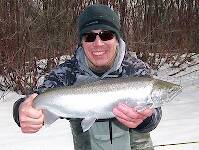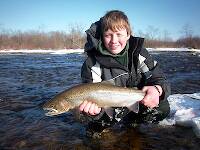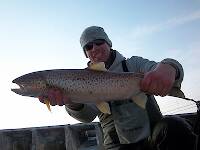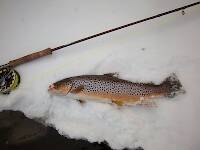
Blue-winged Olives
Baetis
Tiny Baetis mayflies are perhaps the most commonly encountered and imitated by anglers on all American trout streams due to their great abundance, widespread distribution, and trout-friendly emergence habits.
Featured on the forum

As far as I can tell, this species has only previously been reported from one site in Oregon along the Columbia gorge. However, the key characteristics are fairly unmistakable in all except for one minor detail:
— 4 small yellow spots on frons visible in photos
— Narrow occipital spinule row curves forward (but doesn’t quite meet on stem of ecdysial suture, as it's supposed to in this species)
— Short spinules on anterior margin of front legs
— Short rposterior row of blunt spinules on abdominal tergae, rather than elongated spinules dorsally
I caught several of these mature nymphs in the fishless, tiny headwaters of a creek high in the Wenatchee Mountains.
— 4 small yellow spots on frons visible in photos
— Narrow occipital spinule row curves forward (but doesn’t quite meet on stem of ecdysial suture, as it's supposed to in this species)
— Short spinules on anterior margin of front legs
— Short rposterior row of blunt spinules on abdominal tergae, rather than elongated spinules dorsally
I caught several of these mature nymphs in the fishless, tiny headwaters of a creek high in the Wenatchee Mountains.

Troutnut is a project started in 2003 by salmonid ecologist Jason "Troutnut" Neuswanger to help anglers and
fly tyers unabashedly embrace the entomological side of the sport. Learn more about Troutnut or
support the project for an enhanced experience here.
Updates from March 20, 2011
Updates from March 20, 2011
Closeup insects by Entoman from the Lower Yuba River in California
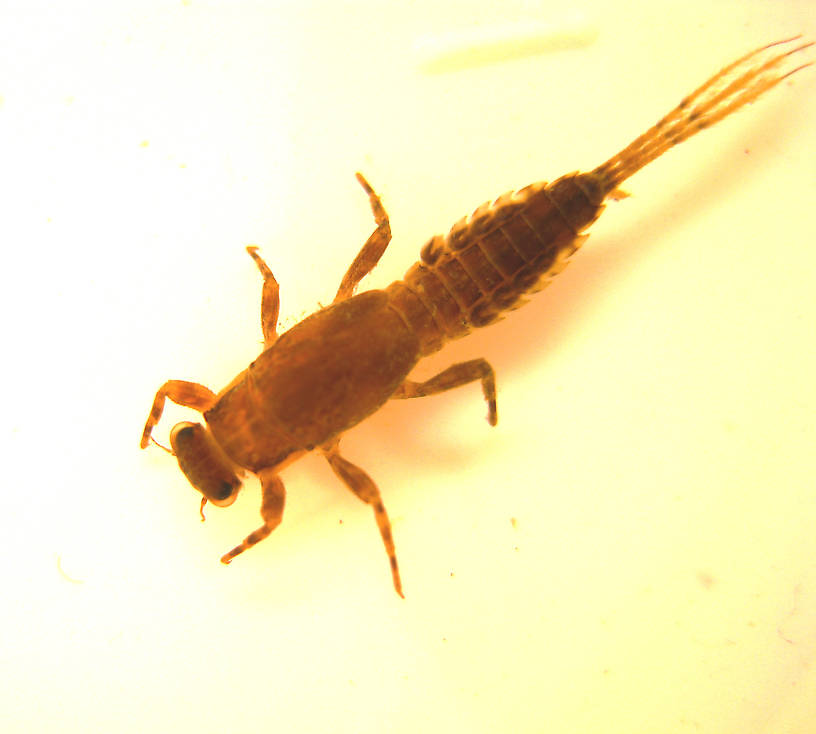
Habitat: Shallow riffle over cobble; approx. 1 ft. deep
Size: 8.5 mm. Mature specimens have been captured as large as 10.5 mm.
Emergence schedule: Variable - starting as early as mid March and lasting as late as early June, depending on the year. Usual duration is at least several weeks or more.
Dun Association: Body is elusive pale creamy yellow w/ orange highlights, cream legs and tails, and dun wings
Specimen status in photo: Preserved
Collection method: Kick net
Comments: Extremely common in samples taken from this location. It's color in life was very close to as depicted in the photo; except for the gradual darkening of the abdominal segments as they progress posteriorly, which has been accentuated somewhat by the effects of preservation. Adult association is based upon capture of this taxon at various stages of emergence including: darkened wingcases, split thoraxic notums, and partially ecloded or ''stillborn'' specimens.
Entoman
Size: 8.5 mm. Mature specimens have been captured as large as 10.5 mm.
Emergence schedule: Variable - starting as early as mid March and lasting as late as early June, depending on the year. Usual duration is at least several weeks or more.
Dun Association: Body is elusive pale creamy yellow w/ orange highlights, cream legs and tails, and dun wings
Specimen status in photo: Preserved
Collection method: Kick net
Comments: Extremely common in samples taken from this location. It's color in life was very close to as depicted in the photo; except for the gradual darkening of the abdominal segments as they progress posteriorly, which has been accentuated somewhat by the effects of preservation. Adult association is based upon capture of this taxon at various stages of emergence including: darkened wingcases, split thoraxic notums, and partially ecloded or ''stillborn'' specimens.
Entoman
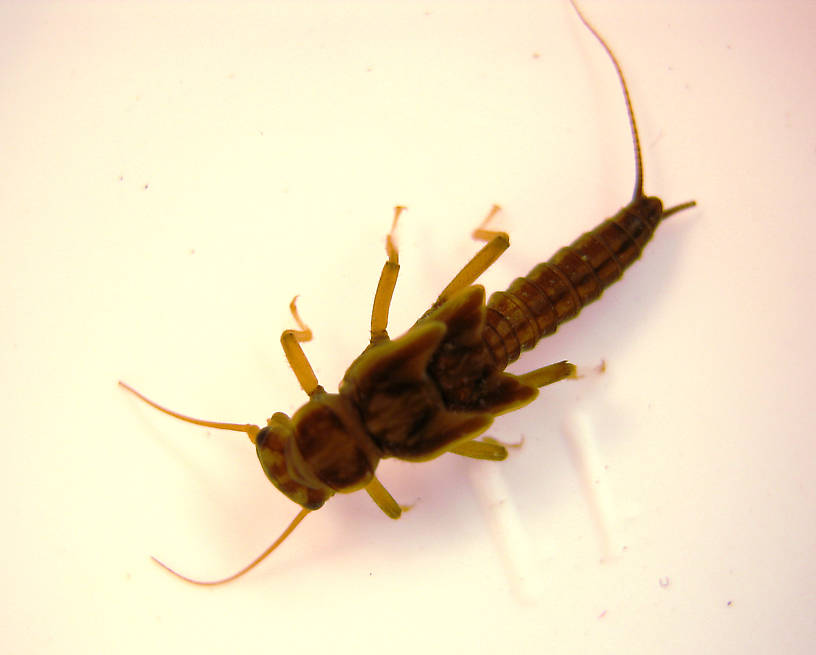
Size - (excluding tails) - 10 mm
Status at time of photo - preserved but no discernible color change as specimen was captured only a few days earlier.
Key characters - unique pattern on dorsal head and thorax; dark medial terga stripe between two paler stripes
This species is very common in west slope north Sierra watersheds. Richard W. Baumann & Boris C. Kondratieff did a study on the same section and at the same time of year (APRIL 25-29, 2010) where this specimen was taken. No other species of Isoperla were reported from this location and quinquepunctata was very abundant. Their hatches can be very heavy some Springs.
Entoman
Status at time of photo - preserved but no discernible color change as specimen was captured only a few days earlier.
Key characters - unique pattern on dorsal head and thorax; dark medial terga stripe between two paler stripes
This species is very common in west slope north Sierra watersheds. Richard W. Baumann & Boris C. Kondratieff did a study on the same section and at the same time of year (APRIL 25-29, 2010) where this specimen was taken. No other species of Isoperla were reported from this location and quinquepunctata was very abundant. Their hatches can be very heavy some Springs.
Entoman
Quick Reply
Related Discussions
Topic
Replies
Last Reply
3
Mar 30, 2012
by Entoman
by Entoman
5
May 10, 2011
by Flatstick96
by Flatstick96
3
Feb 12, 2009
by Creno
by Creno
Re: Lots of new pictures to check out, coming online tonight/tomorrow
In General Discussion by Troutnut
In General Discussion by Troutnut
1
Oct 4, 2006
by Dinerobyn
by Dinerobyn


